The Invisible Threats Are Getting Louder
You might not see it. You might not even feel it. But cyber threats are evolving every single minute. As the digital world rapidly expands, so do the opportunities for malicious actors to disrupt, steal, and damage. And for modern businesses, staying ahead isn’t just about buying security tools; it’s about understanding the bigger picture.
The question we all need to ask ourselves is: Are we preparing for yesterday’s threats or tomorrow’s reality?
In this blog, we dive into five disruptive cybersecurity trends poised to shake up the next 12 months. This isn’t about fearmongering. It’s about awareness. Because when you know what’s coming, you can build stronger, smarter, and more resilient systems. And that’s exactly what we care about at Ariel Software Solutions.
1. AI-Powered Cybercrime: When Machines Attack
While AI is revolutionising business operations, it’s also supercharging cybercrime. Threat actors are now deploying AI to automate phishing attacks, create deepfakes, and even crack passwords at speeds humans can’t match.
Why It Matters
AI has democratised hacking to an unsettling degree. Sophisticated tools that once required expertise are now accessible to amateur cybercriminals. AI-generated attacks adapt, learn, and evolve, making them harder to detect and even harder to stop.
What You Might See in 2025:
- AI-generated spear phishing emails that mimic your writing style or your CEO’s tone.
- Deepfake video calls from “trusted” stakeholders.
- Malicious AI bots are initiating real-time social engineering attacks on customer support.
How Businesses Can Adapt:
Stay updated on threat intelligence, train teams on social engineering red flags, and invest in behaviour-based detection systems rather than rule-based ones.
Pro tip: Ariel works with businesses to design future-ready systems that can evolve with these intelligent threats. Our focus? Building tools that learn, adapt, and protect over time. We ensure our solutions align with the latest cybersecurity trends, including the rising need for secure software development and robust cloud network security.
2. Supply Chain Attacks: The Soft Underbelly of Enterprise Tech
Remember the SolarWinds attack? That was just the beginning. Today’s hackers are no longer attacking you directly. They’re targeting your vendors, plugins, and even software updates to infiltrate your systems.
Why It Matters
Even if your systems are secure, one compromised third-party tool can open the floodgates. Many companies fail to track the vast network of services and APIs they rely on, making them vulnerable without even realising it.
Real-World Risks:
- A compromised plugin that exposes sensitive client data.
- Fake software updates that embed spyware.
- SaaS providers unknowingly distributing malicious code.
How Businesses Can Adapt:
- Vet third-party vendors thoroughly.
- Monitor software dependencies.
- Implement zero-trust frameworks.
- Focus on secure software development practices from the ground up.
Did you know? At Ariel, we consider the full ecosystem when building software solutions. Because your app is only as secure as its weakest integration. This approach is critical not only for resilience but also for improving your cloud network security posture.
3. Rise of Ransomware-as-a-Service (RaaS): Crime, Now in SaaS Format
You don’t need to be a hacker anymore to launch a cyberattack. You just need a credit card. That’s the reality of RaaS, where pre-built ransomware kits are sold or rented to anyone with malicious intent.
Why It Matters
RaaS platforms are structured like legitimate businesses, offering dashboards, customer support, and even affiliate programs. This new model is expanding the reach and frequency of ransomware attacks.
Emerging Risks in 2025:
- Targeted attacks on small-to-medium businesses due to perceived weaker defences.
- Industry-specific attacks (e.g., healthcare, education, retail).
- Ransomware is designed to disable backups before encryption.
How Businesses Can Adapt:
- Maintain frequent, encrypted backups.
- Educate employees on threat awareness.
- Plan your incident response strategy before a crisis hits.
Adopt cybersecurity trends that emphasise layered protection and integrate cloud network security with secure software development workflows.
From the Ariel lens: We advocate for proactive digital architecture, platforms that are not just functional but built with a disaster-in-mind mindset. The goal? Ensure continuity even when the worst happens.
4. Deepfake Technology: A New Era of Digital Deception
What happens when you can no longer trust what you see or hear online? That’s not science fiction; that’s the threat of deepfakes. With AI-generated video and audio, attackers can impersonate CEOs, politicians, or anyone you trust.
Why It Matters
In a business context, deepfakes can be weaponised to authorise fraudulent transactions, manipulate investor sentiment, or mislead customers.
Signs of What’s Coming:
- Executive impersonation during virtual meetings.
- Fake endorsements or press releases.
- Internal chaos was sparked by false HR video communications.
How Businesses Can Adapt:
- Add multi-factor authentication wherever possible.
- Implement media verification protocols for high-stakes communication.
- Train staff on spotting inconsistencies in tone, lighting, or mouth movements.
Ariel’s philosophy: Software should support trust, not erode it. While we don’t promise to stop deepfakes, we do believe in designing tools and systems that promote secure human-to-human interaction. That’s why secure software development is a core element of everything we do, reinforced by cloud network security best practices and a deep understanding of emerging cybersecurity trends.
5. Human Fatigue and the Psychology of Cybersecurity
No matter how advanced technology becomes, the human mind remains the biggest risk. And with constant security alerts, policy changes, and threat warnings, people are tuning out.
Why It Matters
Security fatigue is real, and it’s dangerous. When people become overwhelmed or cynical, they stop caring. That’s when mistakes happen. That’s when access is granted to the wrong person. That’s when breaches begin.
Behaviours to Watch For:
- Employees reusing passwords across tools.
- Ignoring critical updates and warnings.
- Feeling indifferent toward phishing simulations.
How Businesses Can Adapt:
- Simplify security protocols.
- Empower teams through smart UX and subtle security cues.
- Build security into culture, not just process.
The Ariel way: Built into everything we do at Ariel is the awareness that people use software, not just machines. We design with human behaviour in mind, making secure choices the easy ones. By aligning with the latest cybersecurity trends, embracing secure software development, and ensuring high standards of cloud network security, we help your team stay protected without being overwhelmed.
Conclusion: Tomorrow’s Security Starts with Today’s Awareness

Cybersecurity trends aren’t just technical bullet points on a slide deck. They reflect real, imminent shifts in how we operate and how we protect what matters most. Cybersecurity isn’t just a department anymore. It’s a mindset. It’s a design choice. It’s a culture. And the coming 12 months are going to test how deeply your organisation has internalised that.
From AI-generated threats to psychological vulnerabilities, these trends are not distant possibilities. They’re already here. And while Ariel Software Solutions. doesn’t promise bulletproof protection, we do promise this: our solutions are built with the future in mind. We create software that scales securely, adapts intelligently, and empowers people, all without losing sight of what matters most: your vision.
Let’s talk about how to build for tomorrow, today.
Ready to future-proof your digital strategy? Contact us to learn how Ariel can support your next transformation.
Frequently asked Questions (FAQs)
1. What are the top cybersecurity trends to watch in the next 12 months?
The top trends include AI-powered cyberattacks, supply chain vulnerabilities, Ransomware-as-a-Service, deepfake threats, and human-related security fatigue.
2. How is AI being used in cybercrime?
Cybercriminals use AI to automate phishing, create deepfakes, and crack passwords faster, making attacks more adaptive and harder to detect.
3. What is Ransomware-as-a-Service (RaaS)?
RaaS is a model where ready-to-use ransomware kits are sold online, enabling even non-experts to launch attacks.
4. Why are supply chain attacks so dangerous?
They target third-party tools or vendors, allowing hackers to infiltrate secure systems through indirect paths.
5. How can businesses stay ahead of these threats?
By adopting secure software development, strengthening cloud network security, training employees, and staying updated on cybersecurity trends.




